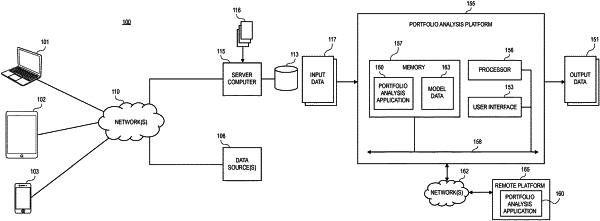| CPC G06Q 10/08 (2013.01) [G06Q 10/06315 (2013.01); G06Q 30/0206 (2013.01)] | 17 Claims |

|
1. A computer-implemented method of using machine learning to assess contracts, the method comprising:
training, by one or more processors using a set of training data, a machine learning model, the set of training data comprising a set of contracts and, for each contract of the set of contracts, a set of terms associated with that contract, wherein at least one contract of the set of contracts indicates a disallowed pricing archetype;
storing, in one or more memories, the machine learning model;
accessing, by the one or more processors, a potential contract between an entity and a customer, the potential contract specifying a set of parameters, wherein at least one of the set of parameters indicates a pricing archetype that is disallowed by the customer;
accessing, by the one or more processors, a set of market conditions associated with the set of parameters for the potential contract;
analyzing, by the one or more processors using the machine learning model, the set of parameters and the set of market conditions;
based on analyzing the set of parameters and the set of market conditions, outputting, by the machine learning model, a set of potential terms for the potential contract, wherein the set of potential terms accounts for the pricing archetype that is disallowed by the customer;
updating the machine learning model using data associated with a contract signed between the entity and the customer resulting from the potential contract; and
analyzing, using the machine learning model that was updated, a subsequent potential contract.
|